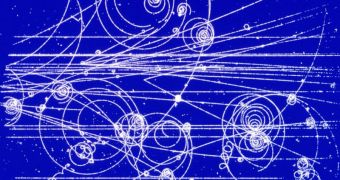The long expected CERN Large Hadron Collider will become operational somewhere this spring, and physicists all around the world can hardly wait to see what new discoveries it will bring. For example, whether the LHC accelerating particles towards each other at speeds close to that of light are able to prove the supersymmetry theory or not.
Supersymmetry predicts that each elementary particle in the Standard Model must have a superpartner with a spin different from that of the particle by a half of unit. Bosons also have integer spins, while leptons have non-integer spins. Meaning that a boson must have a superpartner corresponding to a lepton type particle and vice versa. Superparner particles are mostly known in theoretical physics as sparticles, such as squarks, selectrons or photinos, and are thought to be more massive than any other particles in the Standard Model.
So, they are really massive. Why can't we detect them in nature then? It seems that a sparticle's decay rate is in close relation to its mass, thus more massive unstable particles would decay more rapidly. It is generally believed that sparticles could have existed for a brief period of time right after the Big Bang occurred.
It is currently unknown what kind of exotic particles the LHC will be able to create, however probabilistic calculations show that there are about 10,000 different methods to create only the first four lightest sparticles, and the number could go down to as low as 16, by implying certain theoretical models, that could be used in order to create sparticles, if the theory is correct!
Due to their short life periods, sparticles would not be observable in the same way Standard Model particles are, but could be identified with the help of the signatures of the particles resulted during the decay. Only to create sparticles it takes an impressive amount of energy, similar to the conditions soon after the Big Bang.
Proving supersymmetry may pose a solution for explaining the extra gravitational pull in the universe, and dark matter as well. Enrico Lunghi, theoretical physicist from the Fermi National Laboratory, says that the most likely candidate for dark matter is now the neutralino sparticle, as it has a relatively low mass, thus it should remain stable for a much longer time than other sparticles.
Supersymmetry could also resolve the problems connected to relating quantum physics with general relativity, to spawning the so-called Theory of Everything, explaining all the processes which take place in the universe.
String theory, today's most likely candidate for the Theory of Everything, would also have a great deal to gain over the other competing theory, since it is the only theory that incorporates the supersymmetry concept. This doesn't mean however that string theory is correct, since supersymmetry can also exist without the predictions made by it.
There are a few skeptics, nonetheless. Alvaro de Rujula, physicist at CERN, explains that though supersymmetry represents a beautiful concept, he finds it hard to believe that the LHC will be capable of reaching the energies necessary to generate sparticles, some requiring up to 1 TeV of energy. Even if sparticles can be created in the LHC, there would be only a few, meaning that their distinctive signatures would be extremely hard to identify.

 14 DAY TRIAL //
14 DAY TRIAL //